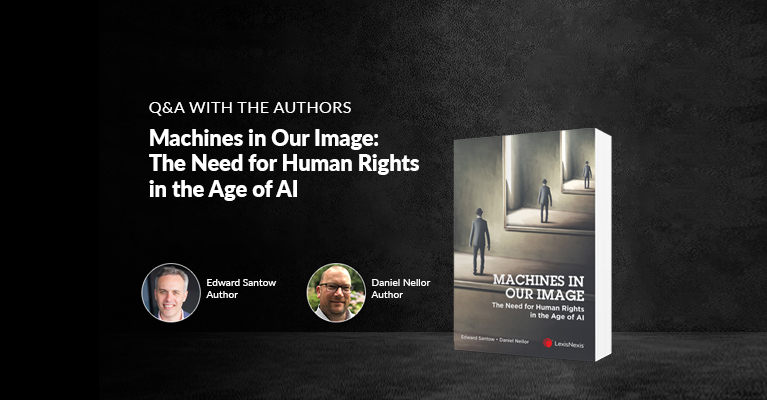Latest Articles
Agentic AI in Australia: Legal and Transparent Solutions for...
Authored by Allison Lawrence, Senior Legal Writer, Technology & Innovation Privacy Awareness Week , June 16-22, 2025 – As Australia observes Privacy Awareness Week, a critical conversation is taking...
Australia's Bold Leap into a New Era of Privacy Law
Authored by Alison Cripps, Head of Workplace, In-House and Technology, Practical Guidance Privacy Awareness Week 2025: Australia's Bold Leap into a New Era of Privacy Law Australia has taken a bold...
Why Lexis+ AI®︎ is a Game Changer for Australian Law Firms
As law firms navigate a highly competitive and evolving market, the need for technology that drives efficiency, reduces costs, and delivers exceptional client service has never been more crucial. A recent...
Annotated Civil Liability Legislation - Queensland, 6th edit...
Q&A with Richard Douglas KC, Gerard Mullins KC, and Simon Grant Annotated Civil Liability Legislation - Queensland, 6th edition is the essential companion for practitioners engaged in the conduct of...
Sexual Assault Trials: Challenges and Innovations
Q&A with Dr Greg Byrne and Dr Jacqui Horan Sexual Assault Trials: Challenges and Innovations offers a comprehensive examination of the systemic issues in sexual assault trials across common law jurisdictions...

Q&A with Authors Edward Santow and Daniel Nellor
Machines in Our Image: The Need for Human Rights in the Age of AI is not an academic text but an essential read for anyone who wants to better understand AI, and how to make it work for everyone.
We took the opportunity to ask Edward Santow and Daniel Nellor a few questions about the book.
Q: What inspired you to write this book?
ES: A decade ago, the NSW Police had a program called the Suspect Target Management Plan, which used an algorithm to identify young people likely to go on to a life of crime. We discovered that the algorithm was misfiring, making it far more likely that Aboriginal young people would be put on this list. This was the first moment where I could say AI could violate people’s human rights – at scale.
Q: What are the biggest challenges that AI poses to human rights?
ES/DN: AI uses data to predict the future: in areas as diverse as what the stock market might do to trends in population health. Of course, we have no data from the future. So, AI tethers us to the past – our historical understanding of the world. This can result in old problems, like discrimination, appearing in new forms.
Q: What is the most dystopian impact of AI that you have recently seen?
ES/DN: The experience of Robodebt in Australia – essentially an automated system using a very simple algorithm – is rightly horrifying. Hundreds of thousands of Australians received incorrect debt notices from the Government, and it caused enormous harm. We are still dealing with the aftermath now.
Q: Are you optimistic that the threat AI poses to human rights can be effectively regulated?
ES/DN: We are cautiously optimistic. Most of our laws already apply to AI – the problem is that those laws haven’t been rigorously or consistently enforced. With old laws and new ones, we need to ensure that they are effectively enforced for the development and use of AI. After all, a rule that isn’t enforce isn’t a rule at all – it’s just a good idea.
Q: What potential benefits could regulated AI bring in imposing greater protections for human rights? Are there any potentialities that are exciting?
ES/DN: There is so much positive potential for AI. It is already transforming healthcare, and helping to democratise information and even insights. If we can ensure that the harms associated with AI are effectively addressed, including by our law, then we will be able to focus more on the great opportunity that AI opens up for our community.
ABOUT THE AUTHORS
Edward Santow is the Director of Policy & Governance at the Human Technology Institute and Industry Professor – Responsible Technology at the University of Technology Sydney. He served as Australia’s Human Rights Commissioner from 2016 to 2021.
Daniel Nellor is a Melbourne-based author with diverse professional experiences spanning politics, academia and the social welfare sector. He holds a PhD in philosophy and is also a playwright.
ABOUT THE BOOK
Artificial intelligence draws on the data we humans have created, and reflects our history back to us. For better and for worse, we are making machines in our image.
AI is changing how we think, how we make decisions and how we navigate the world. It presents a fever dream of utopian and dystopian visions. AI promises everything from an end to deadly disease to limitless wisdom at our fingertips. Yet this brave new world also threatens new kinds of digital repression.
As the age of AI takes shape around us, we need to centre the best of our values. We need a way of thinking ethically about how the machines we have made will shape our future. This book explains how human rights can help us respond to the rise of AI in ways that advance the ideas of dignity, equality and respect.
Machines in our Image is an essential read for anyone who wants to better understand AI, and how to make it work for everyone.
Available from LexisNexis eStore